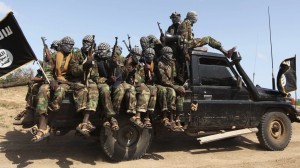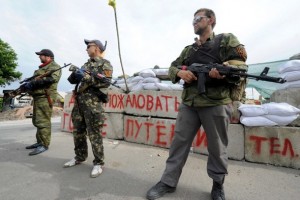Earlier this week, at least 18 people have been killed in new attacks in Kenya’s coastal county of Lamu, the same area where 60 were massacred last month. A spokesman for Somalia’s al-Qaeda-linked al-Shabaab rebels claims responsibility for the attack. According to the Red Cross, nine people died and one was missing around Gamba, and four people were killed in Hindi, located near Lamu island. The attacks occurred late on Saturday night. Police say that unidentified gunmen torched several houses and attacked the Gamba police station, freeing a suspect held in connection with the previous month’s attacks.
An AFP reporter in Hindi says that all of the dead were men, apart from a teenage boy who was shot as he tried to run away. The attackers left messages scribbled in Swahili and broken English on a blackboard taken from a school. One such message read, “You invade Muslim country and you want to stay in peace”. Local Elizabeth Opindo said that she spoke to the attackers, who set fire to her home but left her alive, claiming that they did not kill women. There were about 10 attackers, who spoke a mix of English, Swahili and Somali, all common languages in Kenya. They claimed to be attacking because the lands of Muslims were being taken. In a statement issued hours after the violence.
Al-Shabaab’s military spokesman, Abdulaziz Abu Musab, says that the attackers were able to safely return to their base, having just killed 10 people. They also claimed responsibility for last month’s attack at Mpeketoni, which they insisted was in retaliation for Kenya’s military presence in Somalia as part of the African Union force supporting the country’s fragile and internationally-backed government. Survivors of the Mpeketoni massacre and a similar attack the next night nearby reported that gunmen speaking Somali and carrying al-Shabaab flags killed non-Muslims and said that their actions were revenge for Kenya’s presence in Somalia. While Kenya’s President, Uhuru Kenyatta, denied al-Shabaab’s involvement in the attacks, it seems interesting that the attacks were focused on Mpeketoni, since the town is a mainly Christian settlement in the mostly Muslim coastal region.
The Police have arrested alleged separatists from the Mombasa Republican Council, which campaigns for independence of Kenya’s coastal region, as well as the governor of Lamu county, who is an opposition politician. This unrest has hurt Kenya’s tourism industry, which is a key foreign currency earner and a massive employer for the country, since this is typically one of the busiest times of the year for tourism. Lamu Island itself is a well-known tourist destination, and its ancient architecture is listed as a Unesco World Heritage site.

